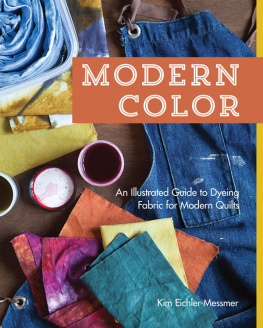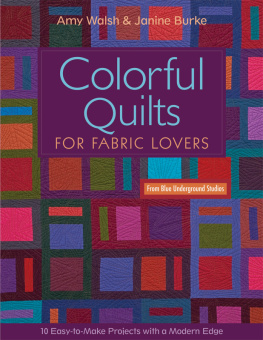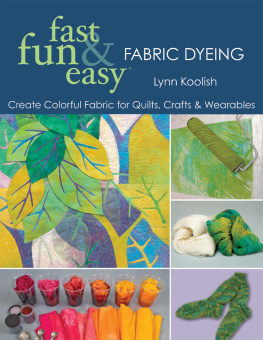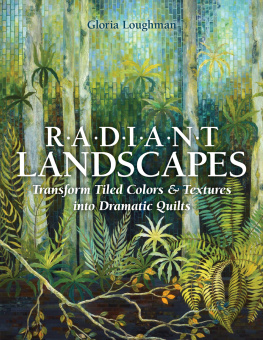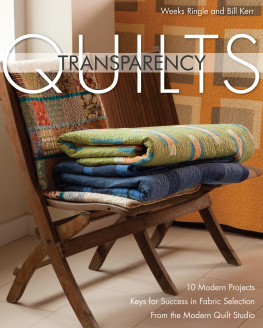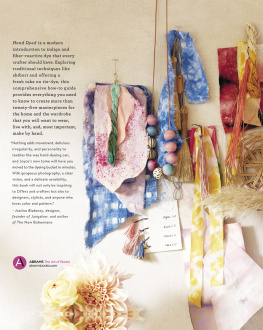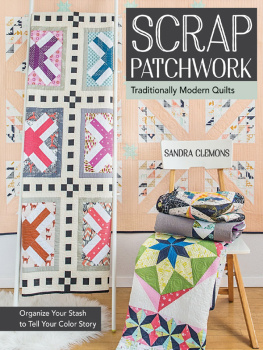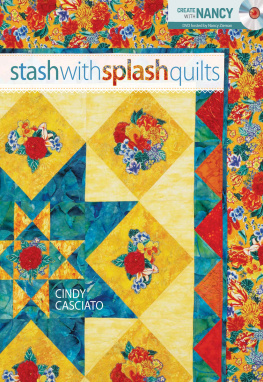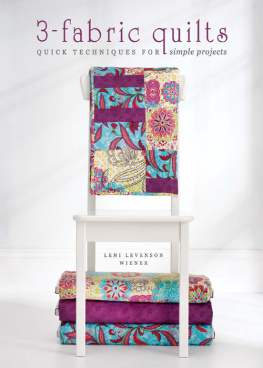Publisher: Amy Marson
Creative Director: Gailen Runge
Art Director / Book Designer: Kristy Zacharias
Editor: Lynn Koolish
Technical Editors: Susan Nelsen and Carolyn Aune
Production Coordinators: Zinnia Heinzmann and Rue Flaherty
Production Editors: Alice Mace Nakanishi and Katie Van Amburg
Illustrator: Tim Manibusan
Photo Assistant: Mary Peyton Peppo
Styled Quilt Project Photography by Tea Ho, Cover and all other Styled Photography by Nissa Brehmer of C&T Publishing, Inc., Flat Quilt Photography by Diane Pedersen of C&T Publishing, Inc., unless otherwise noted
Published by Stash Books, an imprint of C&T Publishing, Inc., P.O. Box 1456, Lafayette, CA 94549
DEDICATION AND ACKNOWLEDGMENTS
I would like to thank my amazing, supportive husband, Simon, who kept me fed and sane throughout the process of working on this book. I would also like to thank my wonderful parents. My dad taught me to sew, and to generally be handy, and demanded a high level of craftsmanship in everything. My mom fostered in me a love of art and knew I was an artist long before I did.
PREFACE
I have been dyeing my own fabric for more than ten years and have been teaching others how to dye fabric for the past seven years. The methods in this book are straightforward and written specifically with quilters in mind. They have even been tested by members of the Kansas City Modern Quilt Guild! The ability to dye your own fabric will allow you to greatly expand your fabric stash and make your quilts more unique. My goal is to lead you on an in-depth exploration of fabric dyeing so that you can gain confidence in the process and ultimately apply these techniques as you make your own unique quilts.
INTRODUCTION
The Benefits of Dyeing Your Own Fabric
When I first started sewing, I felt completely overwhelmed selecting fabrics for each project. I would go to the fabric store with a specific vision but then find myself changing my mind endlessly and spending countless hours in the store figuring out what to buy. Usually what I desired didnt exist, and I would struggle in my attempt to put together an approximation of what I wanted. Eventually I would leave the store, disheartened, with either way too much fabric or none at all.
When I learned how to dye my own fabric, something in my brain clicked. For me, controlling every element of the quilt is liberating. I can make any color I want, including any value (lightness or darkness) or gradation, allowing for an unlimited palette. I can make any quantity that I need and can always make more of each color if I run out. The uneven nature of hand-dyed fabric adds a unique depth to a quilt. I love that no matter how careful I am, the color never comes out exactly the same from dye bath to dye bath. This could be frustrating for some, but these variations mark the loving hand of the maker and create a truly individual quilt.
Dyeing your own fabric requires a greater time investment than buying solids or prints, simply because you cant just run out and buy whatever you need. I order my dye and fabric online, so it takes some planning ahead and waiting for shipping. Additionally, it takes time to dye fabric and wash it out before you can use it. However, I find the process of dyeing fabric to be fun, exciting, and totally worth the effort, and I hope that you will, too.
Each quilt pattern in the book gives instructions for the amount of fabric you need to dye. There will be the option to dye fabric for the quilt top alone, or to dye enough for the top and back. Some of the quilt backs in this book are pieced, and some are solid. Feel free to design your own back and use your favorite prints if that seems more appealing. In that case, you will dye only enough fabric for the quilt top.
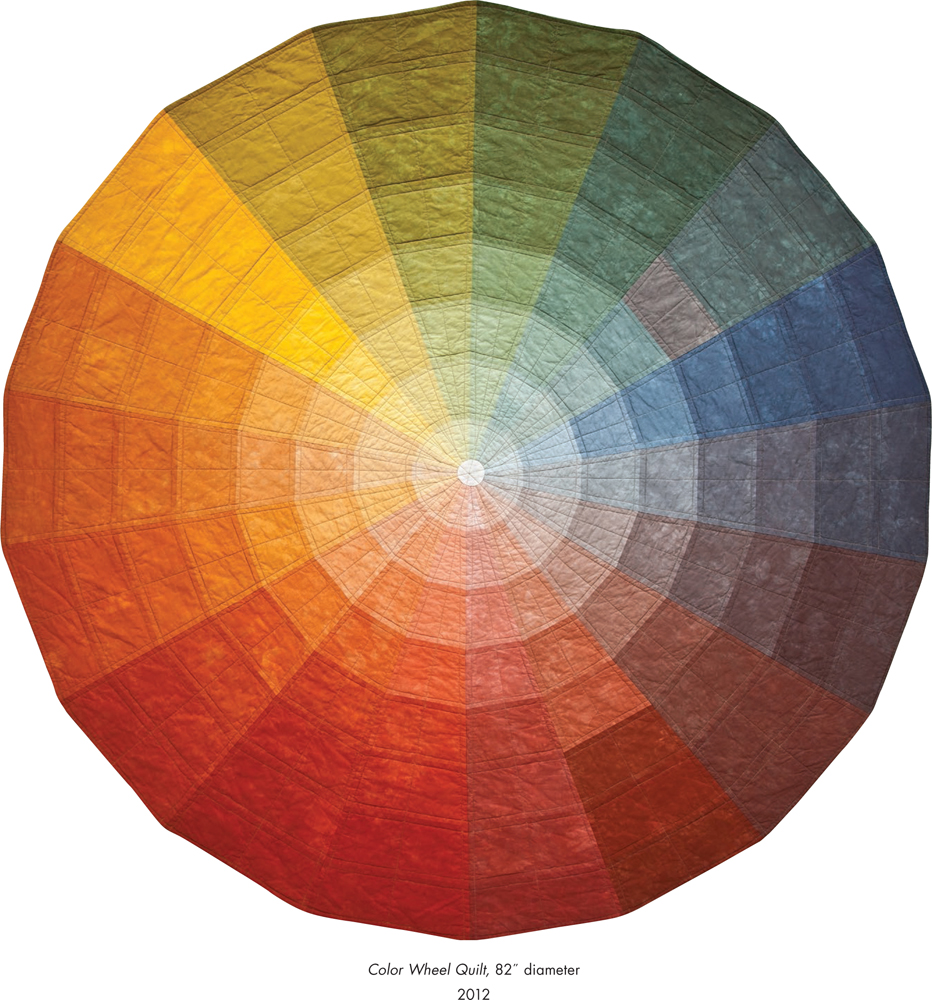
LETS START DYEING
DYES
All the dyeing in this book is done with Procion MX dyes. These dyes are made specifically for cellulose (plant origin) fibers such as cotton, linen, hemp, bamboo, rayon, and Tencel. MX dyes also work on silk, but the color will vary with different materials. Fiber-reactive dyes form a chemical bond with the fibers and have excellent washfastness and good lightfastness. This means that after the initial washing-out process, the dye will not fade with subsequent washings. Hand-dyed fabrics, just like all other fabrics, should be kept out of direct sunlight, which will cause them to fade over time.
Many places sell Procion MX dyes, and each company gives the colors its own names. These companies also create their own custom dye mixtures. Dharma Trading Company, Pro Chemical & Dye, and Jacquard Products are the three largest dye suppliers in the United States, and each sells many different color mixtures. Rather than using proprietary mixes, I prefer to use only pure hue dyes when possible. Pure hue dyes are those that are made up of only one dye color rather than a mix of colors. I do this for several reasons. The most important reason is that I truly enjoy mixing my own colors. Developing the palette for each quilt and creating my custom colors by mixing pure hue dyes is truly rewarding. It is also more economical to buy six dyes and mix all your colors from those six than it is to buy dozens of different premixed colors. When youre starting out, its a good idea to buy about two ounces of each color. The dye in powder form has a long shelf life, and you can replace colors as needed.
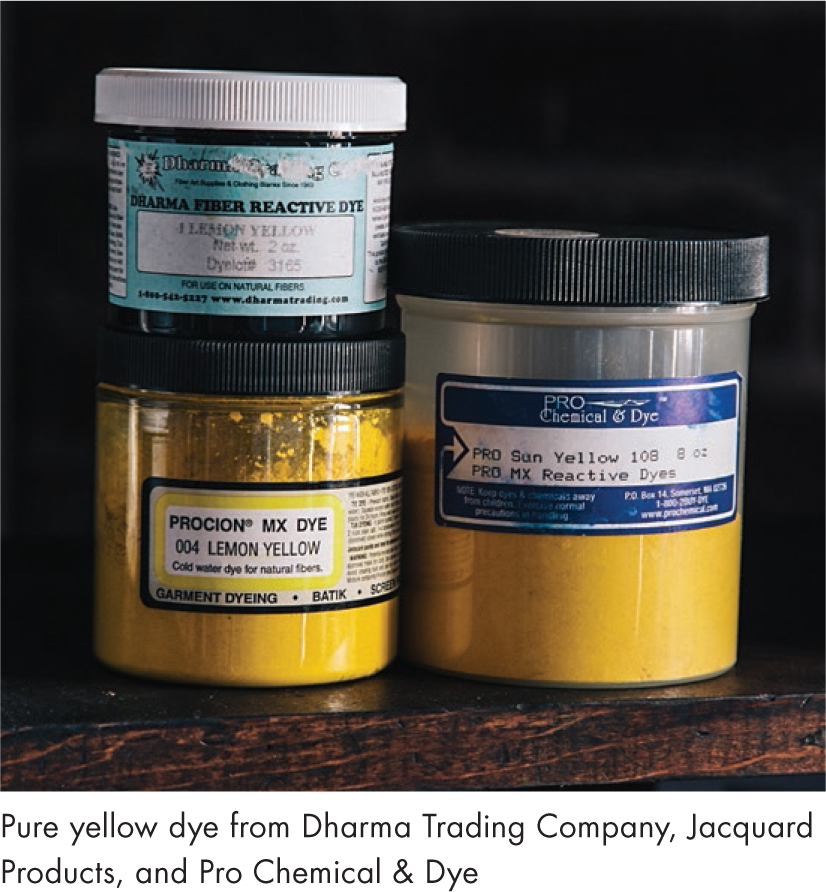
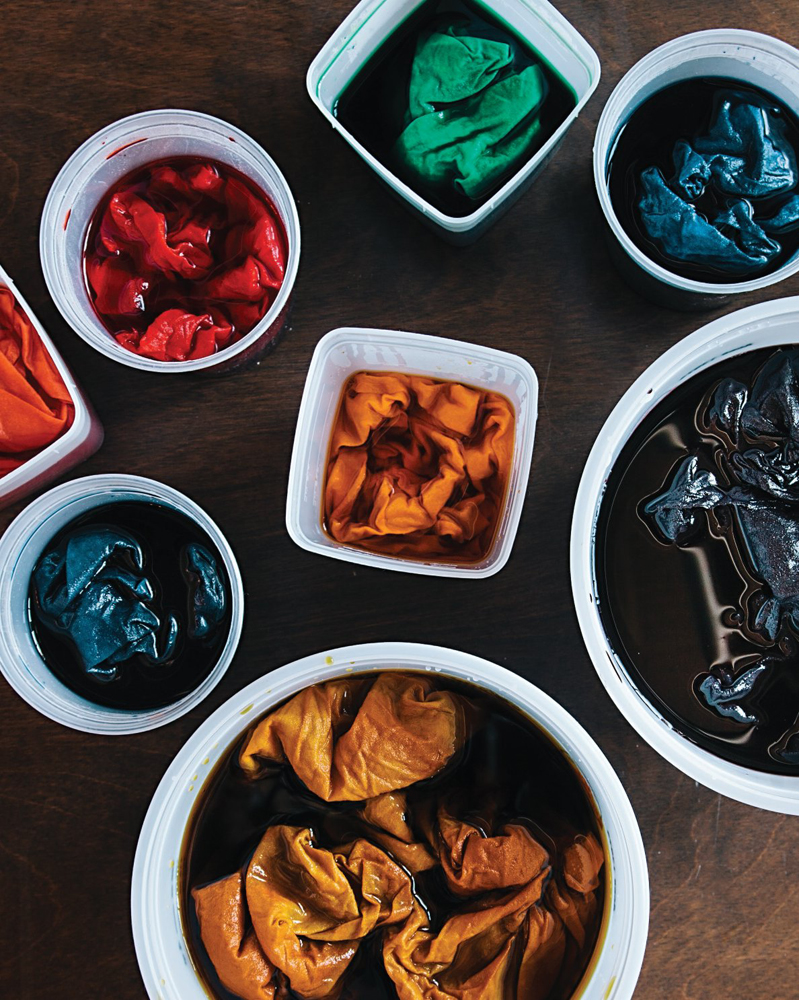
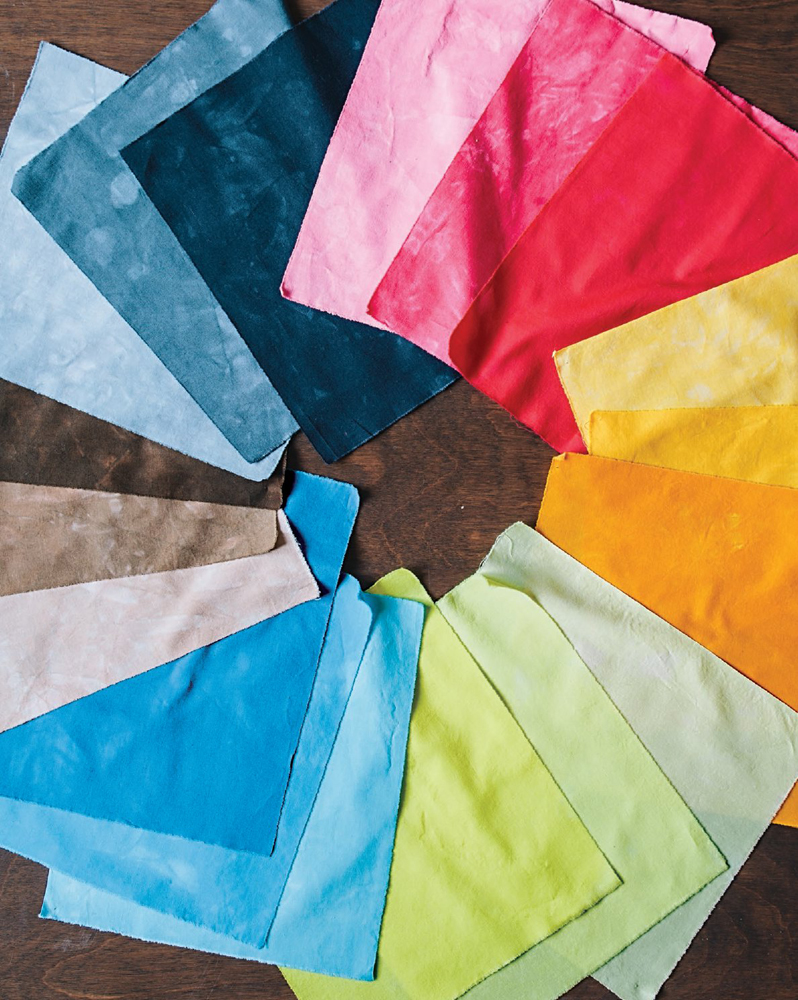
Another benefit of using pure hues is that each hue has a specific Procion code, so although every company names its pure colors differently, the Procion codes are the same. All the fabrics in this book are dyed using different combinations of six different dyes.
NOTE
I usually buy most of my dye and chemicals from Dharma Trading Company, so I will be using those color names.
The first four colors are pure hues: Cerulean Blue, Lemon Yellow, Deep Yellow, and Light Red. I also include two mixed dyes: Khaki and Black. Khaki is Dharma Trading Companys blend, and there isnt an exact equivalent from Pro Chemical & Dye or Jacquard Products. Chino from Pro Chemical & Dye, or Bronze from Jacquard, would be a good substitution. The black dye is a mixture that is consistent between the three companies. The chart below gives the Procion MX code when applicable and the corresponding color names used by each of the three companies.

FABRIC
Any type of cellulose fabric will work with Procion MX dyes. Fabric that is labeled mercerized or PFD (prepared for dyeing) will give you the best color results because it has been treated specifically to accept dye. I prefer to use Dharma Trading Companys Mercerized Cotton Print Cloth or Kona Cotton PFD, or Robert Kaufmans PFD Kona Cotton. Regular cotton fabrics such as muslin, quilters cotton, old cotton sheets, osnaburg, cotton flannel, or regular Kona Cotton are perfectly suitable, but the color will most likely look lighter than it would on mercerized or PFD fabric. All the quilts in this book were made from either Dharmas Mercerized Cotton Print Cloth or Robert Kaufmans PFD Kona Cotton.
Next page
